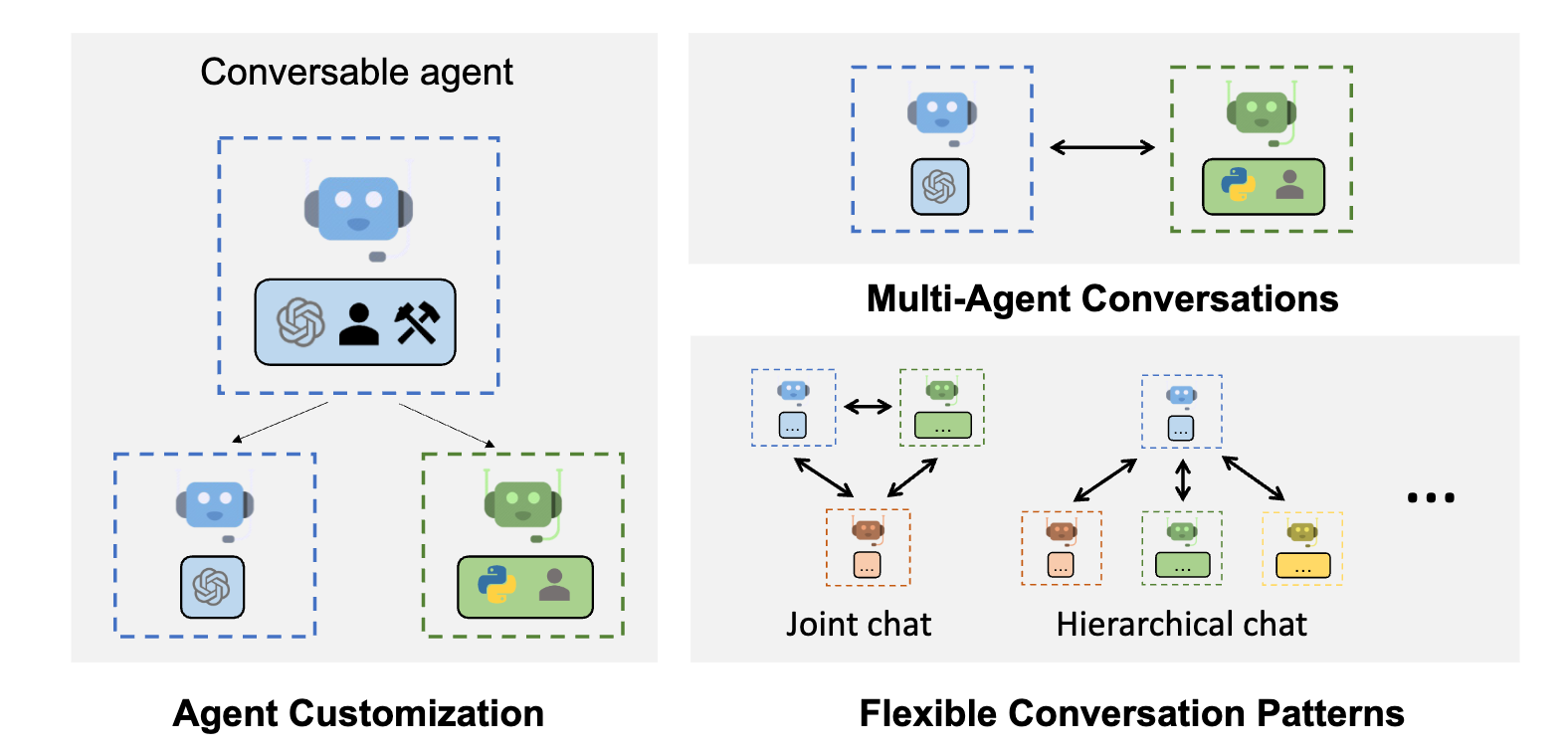Populate your board
Click here to learn what goes on behind the scenes.
Tally the votes
Generate Board Members with AI
The AI Focus Group results are generated using AI-driven algorithms designed by SolveNext, based on open-source research by Microsoft and others. We utilize GPT-4 and GPT-4o from OpenAI, as well as Claude 3 and 3.5 from Antrhopic to generate these results.
Purpose:
The AI Focus Group aims to generate AI personas (also known as Synthetic Users in research) based on the data you provide:
- A hypothesis to test
- An occupation for the personas
- An optional location
Main Goal:
The primary objective is to gather insights on your introduced hypothesis from the generated AI personas. This process creates:
- A qualitative summary from each persona and the overall conversation
- A quantitative "Wanted Score" reflecting each AI persona's perception of "wanting" or "desiring" the proposed hypothesis
- You can have access to the full conversation transcript of the AI Personas for further analysis
AI Persona generation:

AI Persona generation - Image from Stefanode Paoli
AI Agent conversations:

AI Agent interactions - Image from Autogen
Research Foundation:
Our approach is primarily based on the following research:
- "AutoGen: Enabling Next-Gen LLM Applications via Multi-Agent Conversation" by Quingyun Wu and others
- "Creating Synthetic Users Research: Using Persona Prompting and Autonomous Agents" by Vincent Koc.
- "Improved prompting and process for writing user personas with LLMs, using qualitative interviews: Capturing behaviour and personality traits of users" by Stefano De Paoli.
- "There is a faster and more accurate way to do reaserch. Use Synthetic Users" by Synthetic Users
Important Considerations:
- Use this tool as a supplementary resource, not as the sole basis for critical decisions.
- The AI-generated results are based on the data you provide and may not be entirely accurate or complete.
- SolveNext is not liable for actions taken based on the AI's outputs. Always apply your own judgment when interpreting these results.
Tell me about the innovation opportunity
Give me a general description of what you are trying to achive.
1/8
Show me
Share any file related to this opportunity with the AI model.
Is there strategic fit?
Let us know anything or everything you can about this strategic fit and why (some evidence of your work), if you don't have any just type N/A
2/8
Show me
Share any file related to the stragegic fit of this opportunity with the AI model.
Is there portfolio fit?
Let us know about the portfolio fit and why (some evidence), if you don't have any just type N/A
3/8
Show me
Share any file related to the portfolio fit of this opportunity with the AI model.
Is it wanted?
Let us know about the wanted and why (provide evidence). If you don't know type N/A
4/8
Show me
Share any file related to the market demand of this opportunity with the AI model.
Is it doable?
Let us know why you think this is doable and why (provide evidence). If not, type N/A
5/8
Show me
Share any file related to the doability of this opportunity with the AI model.
Is it worth it?
Let us know why you think the opportunity is worth it and why (provide evidence). If not sure, type N/A.
6/8
Show me
Share any file related to the worth of this opportunity with the AI model.
Is there acceptable affordable loss?
Let us know why you think there is acceptable affordable loss and why (provide evidence). If not sure, type N/A
7/8
Show me
Share any file related to the affordable loss for this opportunity with the AI model.
Is there real option value?
Let us know if you think the opentype provides real option value and why (provide evidence). If not sure, type N/A
8/8
Show me
Share any file related to the stragegic fit of this opportunity with the AI model.
Do you want to save?
If you want to save what you did in this next tool please enter your email below.
You'll see a url to your saved session after you click save.Please Save Tool
We need you to save the tool to be able to work with the context information entered
You'll see a url to your saved session after you click save. Then you need run the AI Assist again.Potential Innovation Opportunity *
AI Assist
Let artificial intelligence help you through this tool and suggest ideas to help you determin if the innovation opportunity is wanted.
Select your preferred assistant
Give context to the AI
What can you tell us about your industry?
What can you tell us about the problem you're trying to solve?
What is your biggest desire?
The Super Seven
Practice
Move Fast
Allocated time
30 mins
Modality
Team
Rating
unrated (0)
When to use
- When evaluating whether an innovation opportunity should progress to the next stage of development.
- When managing a portfolio of innovation opportunities to ensure alignment with organizational goals and strategies.
- During regular check-ins or decision points within the innovation cycle to validate progress and make informed decisions.
Recommended For
- Strategic Alignment: Ensuring that innovation opportunities align with the organization's vision, purpose, and strategic goals.
- Portfolio Management: Evaluating how well an opportunity fits within the existing portfolio, avoiding overinvestment or missed opportunities.
- Risk Management: Assessing the feasibility, value, and risks of innovation opportunities to make informed, strategic decisions.
- Decision-Making: Guiding teams to make rational, data-driven decisions about the next steps for innovation opportunities.
Drill Objectives
- To apply the Super Seven Framework to evaluate the strategic, portfolio, and financial viability of innovation opportunities.
- To integrate the Super Seven with the Next Cycle, providing a consistent approach to discovery-driven development.
- To ensure that innovation efforts are aligned with organizational goals, reduce capital leakage, and deliver meaningful value.
- To make informed decisions about whether to move forward, pause, or exit an innovation opportunity based on clear criteria.
Useful Inputs
- Results from small bets and experiments that have tested the most critical assumptions.
- Current understanding of the strategic goals, portfolio balance, and resource constraints of the organization.
- Insights into market conditions, customer needs, and technological feasibility.
Outcomes
- A clear understanding of the true status of innovation opportunities within the Next Cycle.
- Informed decisions on the next steps, including development, pausing, or exiting.
- Enhanced portfolio management and innovation productivity with reduced capital leakage.
- Explain the importance of evaluating innovation opportunities using the Super Seven criteria. Emphasize how this drill provides a consistent approach to decision-making, which is critical for aligning the organization’s innovation efforts.
- Highlight the integration of the Super Seven with the Next Cycle, ensuring that all stakeholders understand both the development process and the criteria that determine whether an innovation opportunity advances.
Step 2. Apply the Super Seven Criteria
- Have participants evaluate each innovation opportunity by answering the following seven filtering questions:
-
Is there strategic fit?
Does the opportunity align with the organization's strategic goals, vision, purpose, and values? Ensure it supports the organization's priorities, including human, intellectual, political, reputational, social, and financial capital.
Secret Question No. 8: How do you know?
-
Is there portfolio fit?
Does the opportunity complement or enhance the existing portfolio? Evaluate whether the organization is overweighted or underweighted in this area and if there's white space that the opportunity can fill.
Secret Question No. 8: How do you know?
-
Is it wanted?
Does the opportunity address a significant, prevalent, and severe need? Is there clear demand or desire for the solution from the target market?
Secret Question No. 8: How do you know?
-
Is it doable?
Can the solution be feasibly developed and implemented with available resources, technology, and organizational will? Consider technical feasibility, resource availability, and any legal or regulatory barriers.
Secret Question No. 8: How do you know?
-
Is it worth it?
Does the opportunity offer sufficient value to justify the investment? Evaluate the potential capital impact, capital risks, and contributions to the organization’s strategic goals.
Secret Question No. 8: How do you know?
-
Is there acceptable affordable loss?
Can the organization afford the potential losses if the opportunity fails? Assess the capital required for the next step and whether the organization can absorb this risk.
Secret Question No. 8: How do you know?
-
Is there real option value?
Does the opportunity offer flexibility, scalability, timing, or exit options that add strategic value?
Consider whether it allows the organization to operate at different speeds, scales, or in different markets.
Does the opportunity allow for changes in inputs, outputs, or processes?
Can it be scaled up or down, or operate at different levels of intensity?
Does it allow for adjustments in speed, such as speeding up, slowing down, or running parallel developments? Can the organization sell, reuse, or repurpose assets to create value elsewhere?
Secret Question No. 8: How do you know?
-
Is there strategic fit?
- For each of the Super Seven questions, participants should answer “Yes,” “No,” or “Not yet.”
- Based on these answers and the evidence provided, decide on the appropriate action, such as moving forward, pausing, exiting, merging, testing further, or re-evaluating at a later stage.
- Encourage participants to be honest in their evaluations and to base their answers on data and evidence rather than assumptions.
- Use visual aids or decision matrices to map out the Super Seven criteria and the corresponding answers for each innovation opportunity.
- Foster a collaborative environment where all participants feel comfortable sharing insights and challenging assumptions.
Helpful AI Prompts
- “AI, can you provide data to support the strategic fit of this innovation opportunity?”
- “AI, based on the current portfolio, how well does this opportunity align with our existing projects?”
- “AI, can you suggest potential flexibility or exit options for this innovation opportunity?”
Examples of Super Seven Evaluation
Strategic Fit
Example: The team answers “Yes” to strategic fit, supported by data showing that the innovation opportunity aligns with the organization’s long-term vision to enhance its environmental impact, specifically by reducing carbon emissions by 50% over the next decade.
Portfolio Fit
Example: The team answers “Not yet” to portfolio fit, identifying that while the opportunity has potential, the organization currently lacks projects in this space, making it a white-space opportunity that could diversify the portfolio.
Is It Wanted?
Example: The team answers “Yes” to wanted, based on customer surveys indicating a strong desire for a new feature in the existing product line that addresses a significant pain point.
Is It Doable?
Example: The team answers “Yes” to doable, based on the current technical capabilities and resources available in the organization. The project team has a proven track record of delivering similar solutions.
Is It Worth It?
Example: The team answers “Yes” to worth it, with financial projections showing that the opportunity could generate a 20% increase in revenue, alongside significant gains in reputational capital.
Is There Acceptable Affordable Loss?
Example: The team answers “Yes” to acceptable affordable loss, indicating that the budget allocated for the next phase of development is within acceptable risk parameters.
Is There Real Option Value?
Example: The team answers “Yes” to real option value, highlighting that the opportunity creates flexibility to scale production based on demand, with minimal additional investment.
Related drills
- Science Fair
- You Are Here
- The Super Seven PAK
- Do It on Monday
Url Next Tool
If you want to re-enter the next tool to edit or review, use the following link.



